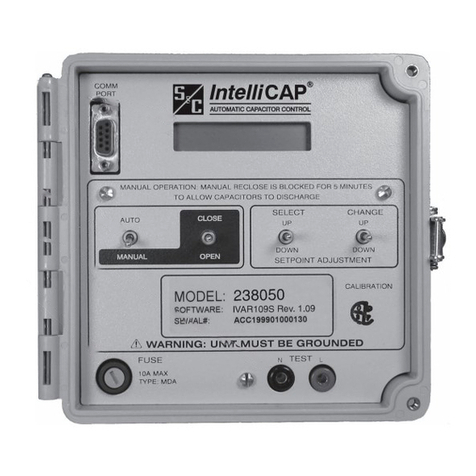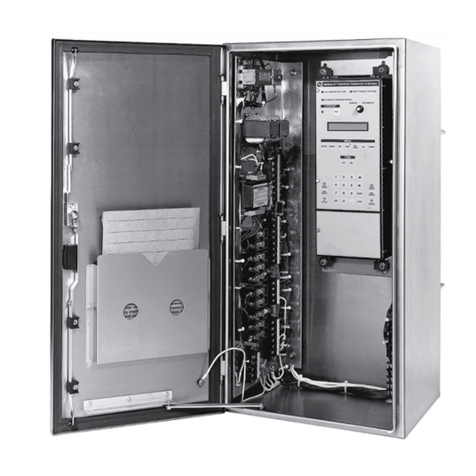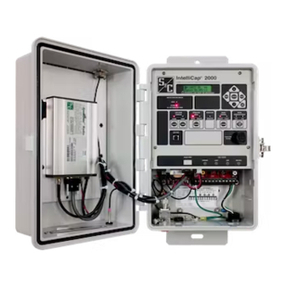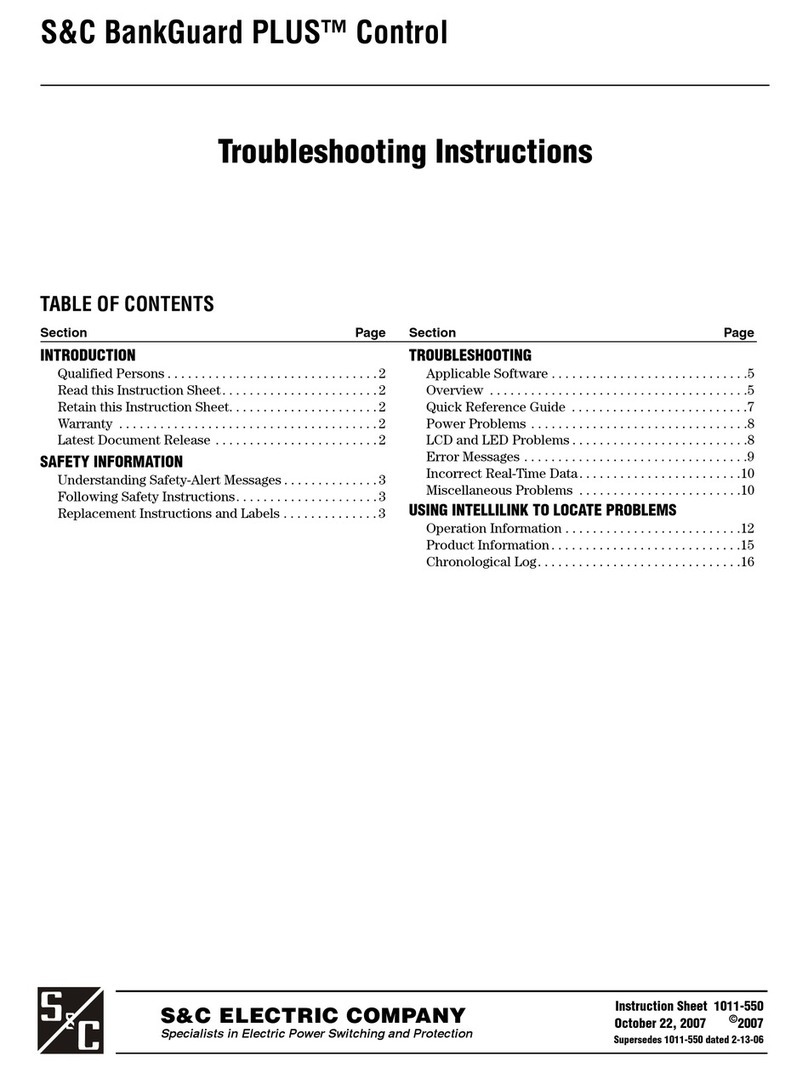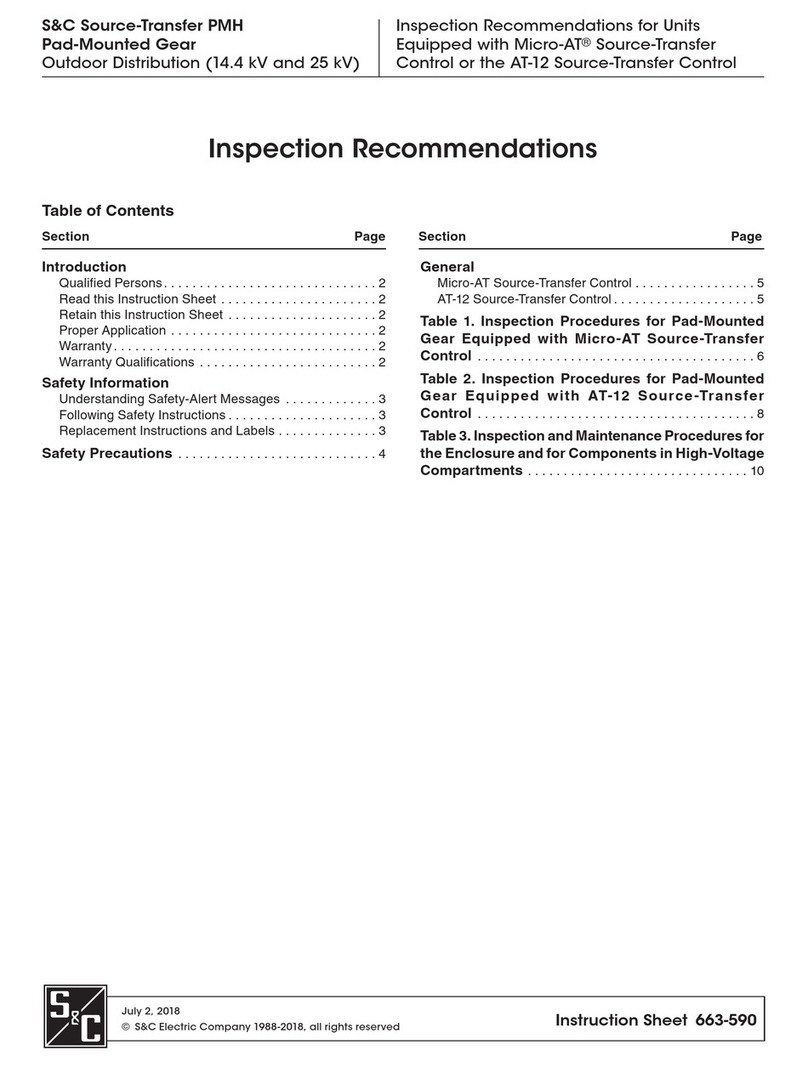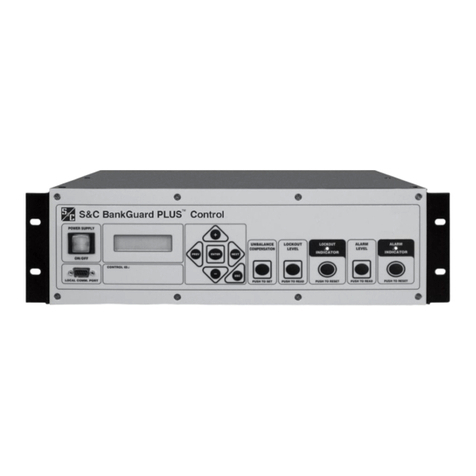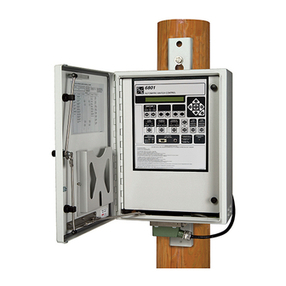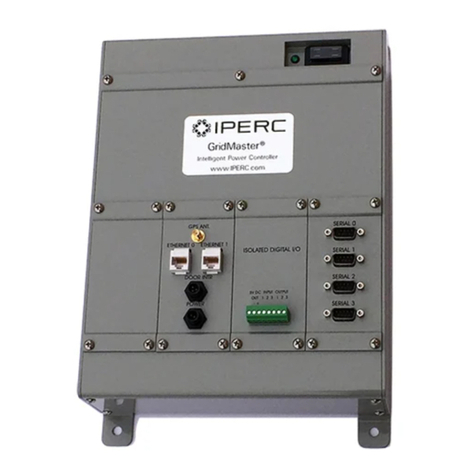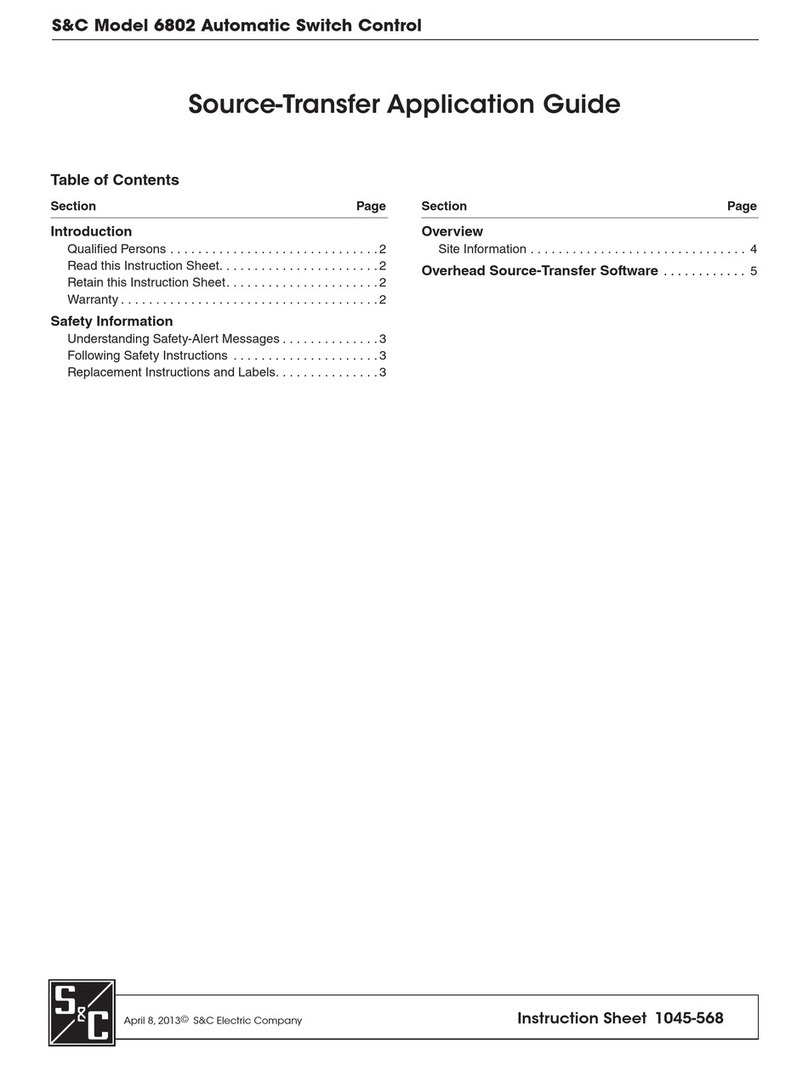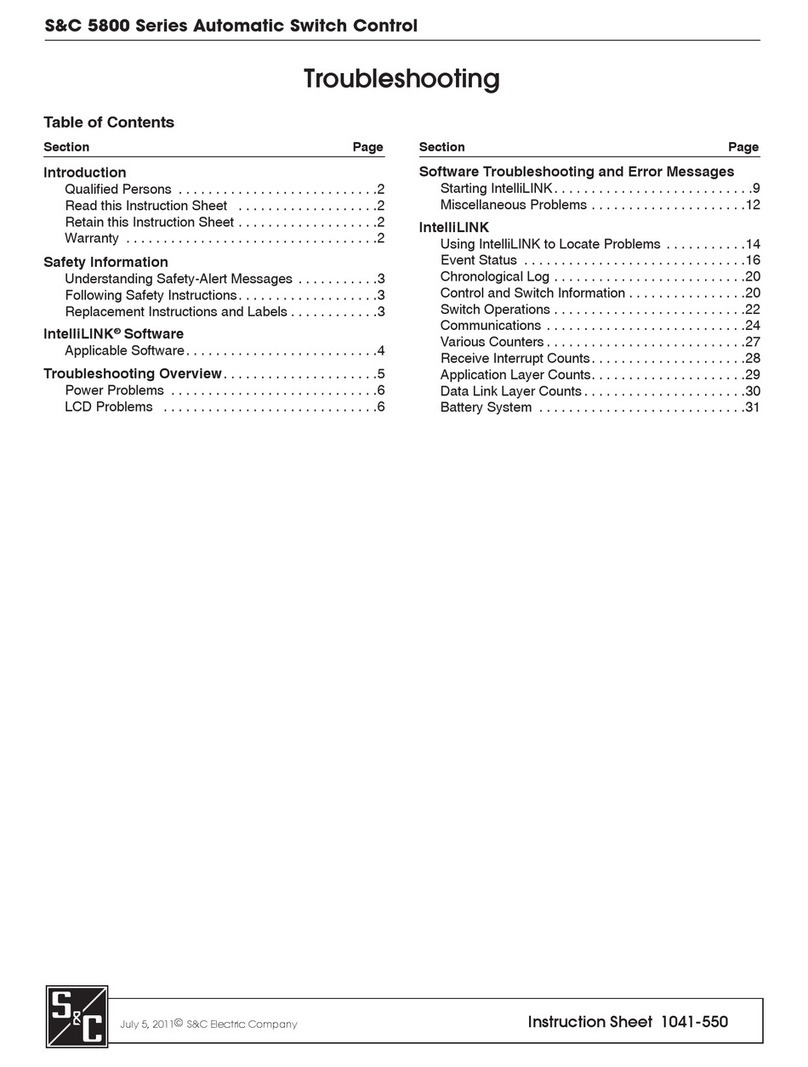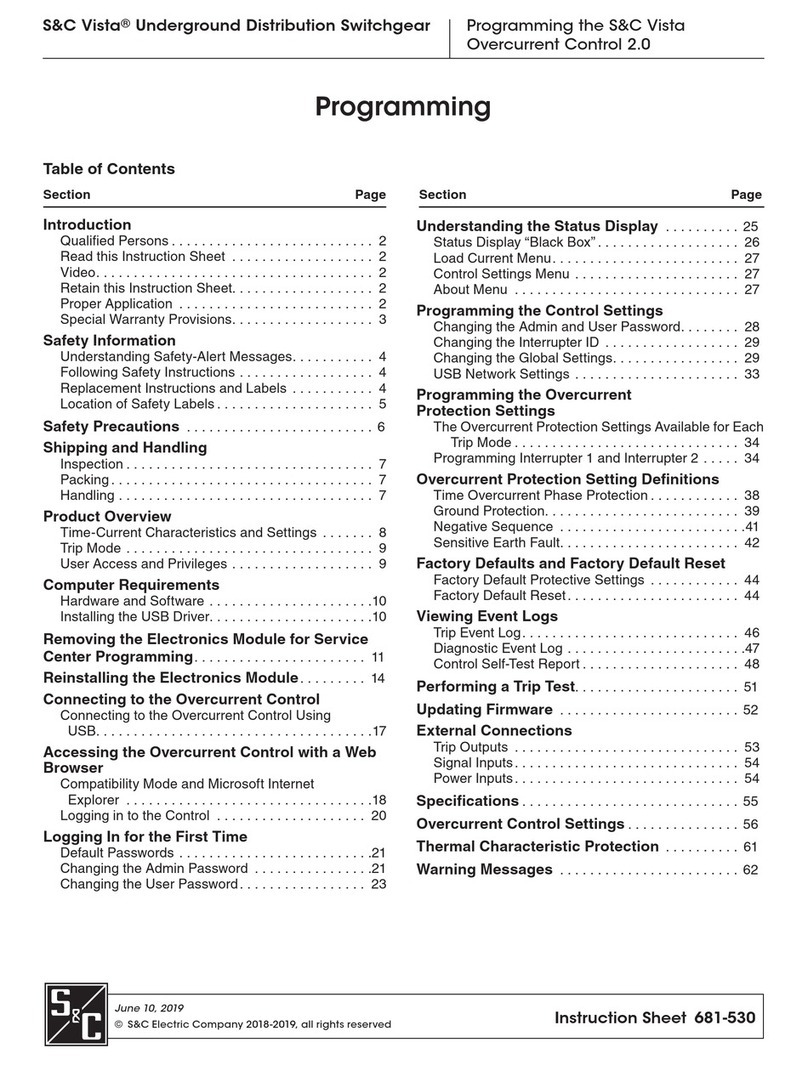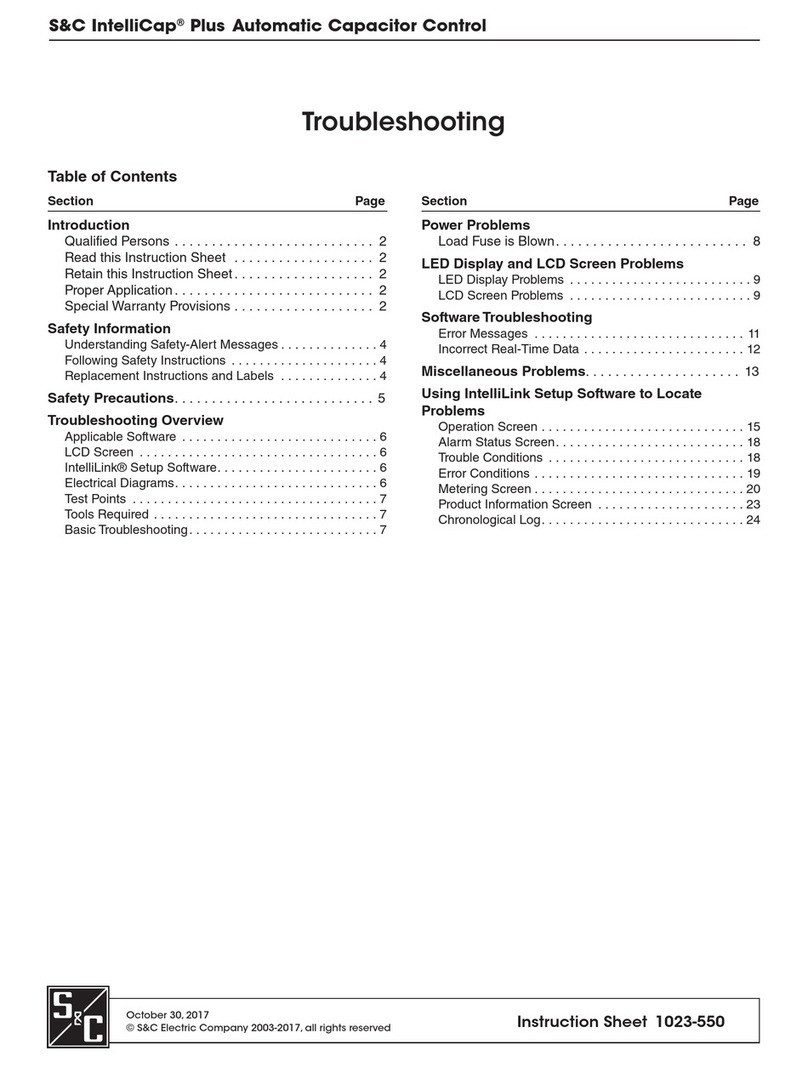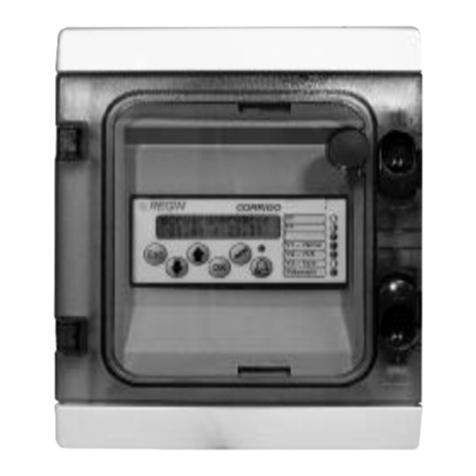
10 S&C Instruction Sheet 515-600
Overview
An Overcurrent Lockout feature may be optionally furnished in the Micro-AT Source-
Transfer Control In Weatherproof Enclosure. This feature prevents an automatic-transfer
operation that would close a source interrupter switch into a fault, thereby avoiding
further utility-system disturbance. The Overcurrent Lockout feature requires three
user-furnished Fisher Pierce Series 1301 Powerex® Line Post Current Sensors for each
source.
An overcurrent in excess of a preset level will set up the lockout feature. If the over-
current is due to a fault cleared by a source-side protective device, the prolonged loss
of voltage will cause the associated source interrupter switch to open. At the same
time, a lockout mode will be set up in the source-transfer control so the other source
interrupter switch will not automatically close into the fault. (If the overcurrent is due
to a fault cleared by a load-side protective device, however, there will be no
prolonged loss of voltage, so the source-transfer control will not initiate any switching
operations.)
To prevent nuisance lockouts resulting from reclosing operations by source-side
circuit breakers, the Overcurrent Lockout feature includes a magnetizing-inrush current
restraint scheme. Upon loss of source voltage or, if the Unbalance Detection feature is
programmed, upon voltage unbalance exceeding a preset reference level for 5 cycles, the
magnetic inrush current restraint scheme is initiated for a period of 2 minutes. During the
period of magnetic inrush current restraint scheme activation 1 second is added to the
overcurrent pickup delay setting duration, adjustable from 3 to 100 milliseconds. Unless
an overcurrent condition exists that is greater than the 1 second plus overcurrent pickup
delay duration, the magnetic inrush current restraint scheme remains in effect for 2 min-
utes immediately subsequent to the initial loss of voltage. The magnetic inrush current
restraint scheme prevents pickup of the Overcurrent Lockout feature due to transformer
magnetizing-inrush current that can be experienced during upstream recloser activity.
The lockout mode may be externally reset; a terminal block is included in the
weatherproof enclosure for attachment of user-furnished control wiring providing the
appropriate reset signal.
A Remote Indication feature may also be optionally furnished in the Micro-AT Source-
Transfer Control In Weatherproof Enclosure. This feature permits remote monitoring of
presence or absence of source voltages, manual or automatic operating mode, status of
the READY indicator, EVENT indicator, and (if furnished) overcurrent lockout. A terminal
block is included in the weatherproof enclosure for attachment of user-furnished control
wiring to remote indicators.
A Test Panel feature may also be optionally furnished. This feature permits the use of
an external, adjustable three-phase source to verify, through independent measurement,
the response of the control to Loss-of-Source, Phase Unbalance, and Overcurrent
Lockout conditions.
A Supervisory Control feature may be optionally furnished as well. This feature
permits switch operation and Micro-AT operating mode control from a remote location. A
terminal block is included in the weatherproof enclosure for attachment of user-
furnished control wiring providing the appropriate supervisory control signals.
A Communications Card feature may be optionally furnished as well. This feature is
used in conjunction with a user-furnished personal computer●for local uploading of the
Micro-AT control’s “events,” operating characteristics and operating parameters, digital
input and output states, and messages explaining why the automatic-transfer READY
indicating lamp isn’t lighted. This feature also allows local downloading of the user’s
standard operating parameters to the Micro-AT control.
A Micro-AT control communication cable is necessary for connecting the communi-
cations card to the personal computer. Refer to the “Accessories” table in Specification
Bulletin 515-31.
For Micro-AT control users with Windows 10, 64-bit operating system platforms, a
Wi-Fi adapter kit (catalog number TA-3401) in tandem with the HMI application software
can be used to locally connect to the Micro-AT control.
To obtain the HMI software application, go to sandc.com/en/support/sc-customer-
portal/ and download the Micro-AT control HMI application software installer.
●Requires a Windows® 95, 98, 2000, NT, XP, or Windows 7 32-bit operating system. A Windows 7 64-Bit
Operating System must be run in XP mode (only available for Professional and Ultimate Operating Systems).
Overcurrent Lockout
Remote Indication
Test Panel
Supervisory Control
Communications Card
Wi-Fi Adapter Kit
